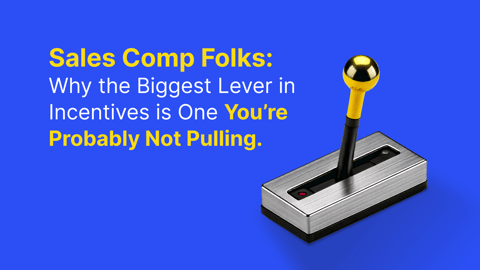During times of economic crisis, focusing on your existing customer and prospect relationships is one of the few keys to growth. Account health is sometimes seen only as a post-sale topic, but in this post I want to break down how it can apply across your full funnel and share some metrics you can track today to ensure you’re driving the right behaviours with your team.
There are two metrics we’ll look at specifically to help you measure account health:
- Sales account coverage
- Sales account engagement
And we’ll also cover how important it is to use them together in order to give you and your business an accurate reading on full funnel account health.
What is account health?
Account health should tell you how likely an account is to buy, expand, renew, or churn, based on how they’re engaging with your organization. Account health can be measured in a few ways, depending on the part of the funnel you’re evaluating.
Accounts are made of people, and people buy from people. Your relationship isn’t with an account, it’s with individual humans. While this is common sense, it means that you should consider the impacts those people may face due to this crisis. This means account health matters in times of economic crisis more than usual:
- Re-orgs will happen, and your primary contact could be laid off. Do you have other relationships within the account, or is your relationship with that person? If it’s only with one person, the account is at risk. Find more friends.
- Your team may go through a re-org, and the primary contact for many of your customers could be laid off. Do multiple people within your org have relationships within your accounts?
- Purchasing freezes will come and go in waves for the next 18 months. There is going to be a backlog of new purchases, renewals, and expansions in the queue when purchasing opens again. You can build the relationships across the account to close the deal the day the purchasing freeze is lifted. If you are single-threaded within the account, you will need to start that internal sales process from day one of a purchasing freeze being lifted. You’ll be three months behind everyone else, and by then there may be a second wave of purchasing freezes as the economic shockwaves keep rippling.
- Your ability to renew and expand during times of budget constraint will depend on two factors. First, how much provable value are you providing to the organization – are you a must have? Second, how robust are your person-to-person relationships? This has a large impact on how flexible a prospect or customer will be with you, and how honest they will be with you about the real reasons behind a decision.
Some metrics to track account health
There are many great posts that dive into customer health – tracking things like daily active users (DAUs), NPS trends over time, willingness to provide referrals, etc. Here I want to focus on the breadth and depth of relationships, pre- and post-sales.
Account coverage
What is sales account coverage? Sales account coverage helps you understand the difference between the size of the account and how many people you know in the account.
- How many people should you know in the account? This should be based on the account size, i.e. you may need to know 50 people in an Enterprise account, but only 5 in an SMB account.
- How many people do you know of in the account? This means they’re in your database.
- How many people do you know in the account? This means they’re in your database, and you’ve previously engaged with them.
You can make a simple ratio of this. We should know 50 people. We know of 10. We know 5.
Breaking this down by role within the org, purchasing process, and adoption is also very impactful. For example, if you know 50 people in an account, but 49 are end users and only 1 is on the purchasing team, you could be in trouble.
You have visibility into it now. Go make a game plan to find more friends.
Account engagement
What is account engagement? Account engagement helps you understand the difference between who you know and who you have an active relationship with. Think of it as the difference between a transaction, an acquaintance, and a friend.
- With a transaction, you may only speak to someone once.
- With an acquaintance, you may only speak to them once a quarter or once a year.
- With a friend, you speak to them regularly – and it’s a two-way street.
There’s another layer of complexity here, because your organization is made up of people. So multiple people can be engaging. It’s important to classify them, because you could be lulled into a false sense of security with an account. For example, activity may come from:
- Marketing (as a department, like your newsletter)
- Marketing (as individuals, like working on a case study)
- SDRs
- AEs,
- CSMs
- Support
- Your executives
The direction of engagement matters as well, is it a 1-way street, where you blast updates out but you never hear back? Or is it a 2-way street, with a high level of engagement from your buyers or customers?
The type of activity matters. Do you have an email-only relationship with the account, or do you have other types of activities – like phone calls, gifts, webinars, and once we’re allowed to leave the house again – in person visits.
Layering sales account coverage and account engagement together
Now that you have the basic metrics for coverage and engagement, you can bring them together to ask better questions, like:
- For a new business account,
- How many contacts should you know?
- How many do you know of?
- How many have buying roles with the opportunity?
- How many have you engaged?
- How recently?
- Is engagement 1-way or 2-way?
If your ratios are very off, you need to find more friends.
- For a renewal account,
- How many contacts are you engaging?
- How many people on your side are doing that engagement?
- How recent is that engagement across the contacts, i.e. was your last touch 6-months ago for everyone but your primary contact?
There’s a lot of opportunity here.
For example, if you know 50 people in the account, but your Sales/CS team is only talking to 2, and Marketing is only communicating with 5 – right away you’ll see that you have a big opportunity to expand your relationships in the account with value-add programs.
Run them through Marketing, Sales, or CS – it doesn’t matter.
Build your relationships with people, as people, and it will help your team weather the storm.
To learn more about managing account health, check out my free book The Deal Health System.




